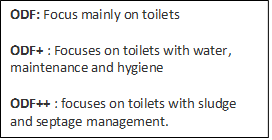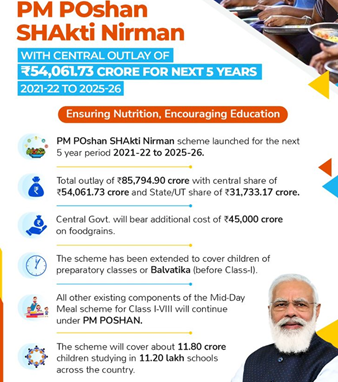Tuesday, 5th October 2021
Winter action plan for Delhi
The Chief Minister of Delhi has released a 10-point winter action plan for the national capital.
About the News
- As per the Delhi government, the plan will help combat air pollution in Delhi, which deteriorates during the winter season due to a number of factors, including stubble burning by the farmers in nearby states.
- Delhi has been ranked as the most polluted capital city in the world in 2020 for the third consecutive year, according to a report by a Swiss group that ranked cities based on their air quality.

What are the causes behind Delhi’s air pollution rise in winter?
- Meteorological factors
- Change in wind direction associated with withdrawal in Monsoon: Prevalent wind direction changes from easterly in monsoon to northwesterly in winter. Northwesterly storms carrying dust from Rajasthan and sometimes Pakistan and Afghanistan pollute Delhi air.
- Dip in temperatures: As temperature dips, the inversion height — which is the layer beyond which pollutants cannot disperse into the upper layer of the atmosphere – is lowered. The concentration of pollutants in the air increases when this happens.
- Dip in wind speed: This reduces dispersion of pollutants.
- Human factor: 17-26% of all particulate matter in Delhi in winters is because of biomass burning or stubble burning.
Sources:
Nobel Prize in Medicine
In News
Nobel Prize in Physiology/ Medicine for deciphering the science of touch has been conferred to U.S. scientists David Julius and Ardem Patapoutian.
About the Discoveries of receptors for temperature and touch
- The Nobel Discovery: The discovery is about the molecular sensors in the human body that are sensitive to heat, and to mechanical pressure, that make us feel hot or cold, or the touch of a sharp object on our skin.
- History of Receptor Discoveries: A series of discoveries were made in the late 1990s (identification of heat receptor by Julius) and early 2000s to figure out the touch detectors in our body and the mechanism through which they communicate with the nervous system to identify and respond to a particular touch.
- That first discovery led to identification of several other receptors.
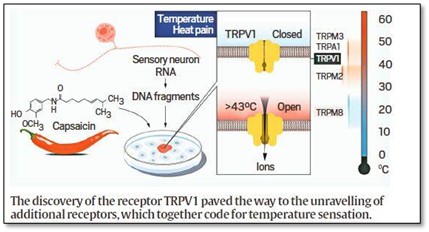
Touch Detectors and their Mechanism of Communication
- Touch Identification: On experiencing the heat/cold/touch, the heat receptors enable the passage of some specific chemicals, like calcium ions, through the membrane of nerve cells.
- In the human body, all the molecules do not sense heat when they are exposed to it. Only very specific proteins do
- Transmission of Signals: The entry of these chemicals inside the cell causes a small change in electrical voltage, which is picked up by the nervous system which then triggers an appropriate response.
- Range of Heat Reception: There is a whole spectrum of such receptors that are sensitive to different ranges of temperature.
- When there is more heat, more channels open up to allow the flow of ions, and the brain is able to perceive higher temperature and similar is the case with lower temperature.
- These receptors are sensitive not only to external touch, but can also detect temperature or pressure changes inside the body.
Significance/Implications of such discovery:
- Regulation: The identification of these receptors opens up the possibility of regulating their functioning. For examples, the receptors that make us feel pain can be suppressed, or made less effective, to feel less pain.
- Aid Medical field: Various pain killers can be designed and made to work in this fashion.Other therapeutic implications include those interventions that might be useful in treatment of diseases like cancer or diabetes.
Sources:
SEBI’s Proposed Gold Exchange
In News
The Securities and Exchange Board of India has approved a framework for the establishment of Gold Exchange.
About the News
- About: The SEBI Board approved the Gold Exchange and SEBI Vault Managers Regulations, 2021 that allow bourses to set up a gold exchange in India.
- The exchange will act as a national platform for buying and selling of electronic gold receipts (EGR), where there will be national level discovery of price.

- EGR: Under the framework, the instrument representing gold will be called electronic gold receipt (EGR) which will be considered securities.
- EGRs will be fungible and inter-operability between vault managers will be allowed to lower the cost of transactions.
- They are available in the denomination of 1kg, 100 gm and 50 gm.
- As they are treated as security under the Securities Contract Act, their buying and selling will attract Securities Transaction Tax.
- Investors will also be given an option to convert EGR back into physical gold. In this case Goods and service tax will be applied @ 3%.
- Stock Exchanges: As per the framework, any recognized stock exchange, existing or new, can launch trading in electronic gold receipts in a separate segment.
- The denomination for trading of the EGR and conversion into gold will be decided by the stock exchange with approval by the market regulator. Further, investors will be allowed to hold the EGRs for as long as they deem fit.
- Vault Managers: Under the regulation for vault managers, SEBI said that entities applying to be vault managers should have a net worth of Rs 50 crore or more. Further, they should be a body incorporated in India and will be regulated by SEBI as an intermediary.
- Vault managers will be responsible for accepting deposits, storage and safekeeping of gold, creation of EGRs, withdrawals, and grievance redressal.
Pros and Cons
- Increase in Options: Setting of exchange will widen the options available with the investors, investing in gold. Example: Gold ETF’s, gold fund of funds, Sovereign gold bonds.
- Liquidity: As gold and gold assets can be sold readily in market, it will provide high liquidity, safety and tax efficiency.
- Lowers Security Risk: It eliminates the risks associated with holding the gold physically. Eg- Theft
- Expensive Proposition: Since the holder of EGR have to bear storage charges this will make holding EGR more expensive than keeping gold at home.
Sources:
Caste Census
In News
The Union government has recently expressed its position to the Supreme Court that as a matter of policy, it will not to enumerate caste-wise population other than Scheduled Castes and Scheduled Tribes.
About the News
- In an affidavit filed in the Supreme Court, the Union government has ruled out conducting a Socio-Economic Caste Census (SECC), stating that a caste census (except that for the Scheduled Castes and the Scheduled Tribes done traditionally) was unfeasible, “administratively difficult and cumbersome”.
- The affidavit was in response to a writ petition by the Maharashtra government seeking directions to the Union government to collect data on the Backward Class of Citizens (BCC) of rural India during the enumeration of the 2021 census. The petition also wanted the Centre to disclose the raw caste data on other backward classes (OBCs) collected during SECC-2011.
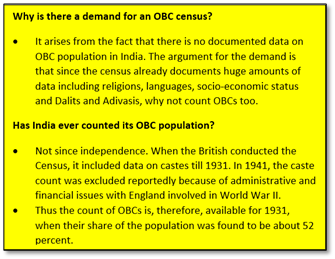
What is Caste Census?
- Caste census means inclusion of caste-wise tabulation of India’s population in the Census exercise held one in ten years.
- From 1951 to 2011, every census in India has published the population of Scheduled Castes and Scheduled Tribes, comprising the Dalits and the Adivasis, along with the gamut of data including religions, languages, socio-economic status, etc.
- It, however, has never counted OBC’s, the lower and intermediate castes which roughly constitute about 52 percent of the country’s population. All castes other than Scheduled Castes and Scheduled Tribes are marked in the general category.
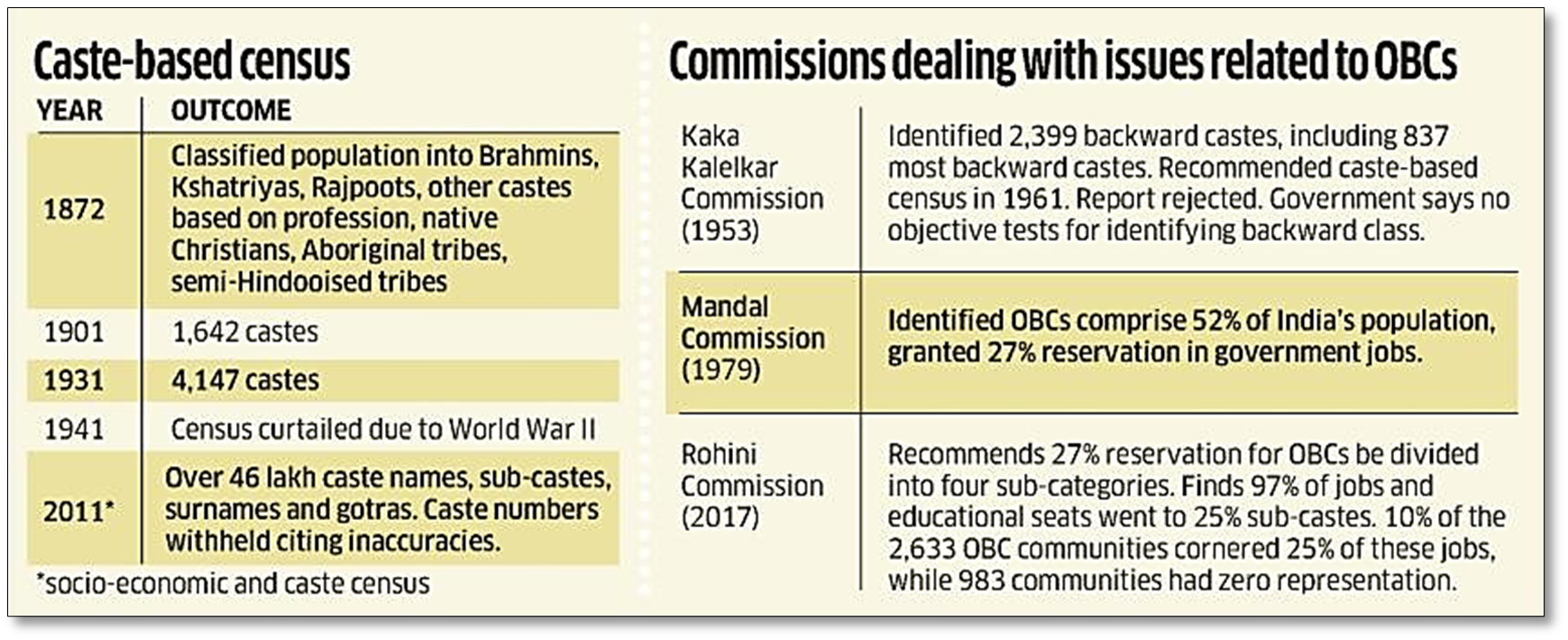
Why is Caste Census a problematic task and a contentious issue?
- Complications with Caste Census: An attribute like caste being obtained in a census exercise makes matters complex on multiple grounds.
- Given the differences in caste hierarchies across various regions of the country, a comparative reading along with generating a common hierarchy may be a challenge.
- Further, caste linked deprivation or adversity may not be as common as occupation linked predicaments, which become easier to compare across states/regions.
- An intimate and personalised attribute like caste may have its differential exposition between urban and rural residents. Urban residents’ need for anonymity can always bias the reporting on caste.
- The recognition and adherence to caste identity is to a large extent shaped by progressive ideals, cosmopolitanism and education, which has its own regional divide in the country between the north and the south.
- Data Accuracy Issues: With such complexities associated with divulging caste identity, one cannot be sure of its accuracy in reporting on the one hand and the possible bias linked to other attributes on the other.
- Caste Politics: There is a fear of potential abuse of the data on caste for petty vote bank politics. Most political parties apply their own caste arithmetic in allotting tickets to their electoral candidates, and several thrive in elections as a result.
- Changes in Caste Dimensions: Caste is an inherently subjectively construct. There is no clear answer to the question “What is your caste”? Caste names differ on a contextual basis.
- Furthermore, with increasing urbanisation, caste is getting more and more fluid, thereby eroding the endogamous nature of caste. For instance, what caste does one assign to a child born from an inter-caste marriage?
But, despite its complexities, Caste Census may be a necessary Evil in India. The Reasons being
- Caste-based Economic Disparities: According to a 2018 research study, upper caste Hindus own around 41 percent of the national assets; OBCs own 31 percent while Scheduled Castes (Dalits, formerly known as “Untouchables”) and Scheduled Tribes (Indigenous Communities) own 7.6 percent and 3.7 percent, respectively.
- It is evident that distribution is based mainly on centuries of inequality, exploitation, privileges, and opportunities.
- Socioeconomic status quo: India’s class system is a direct result of the millennia-old caste system, and unless there are targeted policies to rectify the inequalities caused by the caste system, the situation will not change. A fair caste census can help ameliorate this issue.
- Needed for Policy reforms: Caste and sub-caste information can also be valuable in designing policies for affirmative action and redistributive justice. In a society where caste pervades every aspect of the economic, social and political spheres, data on castes is an essential tool to analyse and design policies for affirmative action and redistribution.
- Bringing Forward Anthropological Facts: Data collection about caste would not only help the government better identify the intended beneficiaries of its reservation policies, but also bring forward anthropological facts about the nature of our national population.
- Protests due to shrinking job opportunities in the private sector and declining or stagnating incomes in agriculture, can be addressed with identification of beneficiaries across castes.
- Cross-sectional understanding of caste: A caste-wise breakup of the population in the census will enable a cross-sectional understanding of how castes interact with social, economic, cultural and demographic characteristics, and generate abundant data to understand how every caste is faring in various socio-economic indices like literacy rate, child marriage, infant mortality rate, death rate, and so on.
Way Forward
- A caste census need not necessarily mean caste in the census. It may be an independent exercise, but one that needs adequate thought and preparation, if its ultimate goal is not for political or electoral purposes, but for equity in distribution of opportunities.
- A preliminary socio-anthropological study can be done at the State and district levels to establish all sects and sub-castes present in the population. A caste census may not sit well with the goal of a casteless society, but it may serve, in the interim, as a useful, even if not entirely flawless, means of addressing inequities in society.
- The upcoming census 2021 enumeration should be a priority and the proposed digital enumeration should become more effective in generating required data of quality and accuracy. The upcoming census is certain to reveal interesting realities of population dynamics that go beyond the narrow and regressive outlook of the caste count to help gauge the transformation in human capital.
Conclusion
The idea of a national caste census might be abhorrent when the stated policy is to strive for a casteless society, but it will be useful to establish statistical justification for preserving caste-based affirmative action programmes. It may also be a legal imperative, considering that courts want ‘quantifiable data’ to support the existing levels of reservation.
Question: Caste Census a necessary Evil for the Indian Society. Elaborate.
Sources:
- Do we need to count caste in census?
- Caste census data could help us take superior affirmative action
- A riddle called caste census
- 2011 caste census data unusable, can't add caste to 2021 data: Centre tells SC
- Does India Need a Caste Census?
- Complex count: On caste census
- The case for a caste-based census in India
- Explained | Why is the government against caste census?
- Caste-based headcounts won’t be enough. India needs a full-blown ‘caste census’
- Explained | Caste-based census in India: Why is there a growing demand?
This Day in History - Exchange of Indian Currency
On October 5, 1676, the East India Company got the right to exchange Indian currency from the King of England in Mumbai. The history of The East India Company and coinage dates from 1601, when, with a Royal Charter from Queen Elizabeth I, it’s first ships set sail to the east with cargoes of heavy cloths and £6,000 of specially minted silver coins featuring the emblem of the Queen. The Company’s coinage became the foundation of trade across the emerging Empire in the east. One of the oldest mints in India, the first mint in Bombay was set up by The East India Company’s Governor Gerald Aungier, for the coinage of rupees, pies and bajruks and the first Bombay Mint rupee was coined in 1672.

Sources:
Image of the Day - World’s Northernmost Island
This is image of a tiny island off the coast of Greenland, discovered during the Leister Expedition, which is being claimed to be the world's northernmost point of land. It is a yet-to-be-named island north of Greenland that could soon be swallowed up by seawaters. It is only 30 to 60 metres above sea level, and could be a "short-lived islet". It has been discovered by the researcher of the Copenhagen University.

Source:
Factoring Business
- Context: The International Financial Services Centres Authority (IFSCA) has issued licences to four trade-financing platforms.
- Factoring is a financial transaction and a type of debtor financein which a business sells its accounts receivable (invoices) to a third party (called a factor) at a discount.
- A business will sometimes factor its receivable assets to meet its present and immediate cash needs.
- Forfaiting is a factoring arrangement used in international trade finance by exporters who wish to sell their receivables to a forfaiter.
- Factoring is commonly referred to as accounts receivable factoring, invoice factoring, and sometimes as accounts receivable financing.
- Invoice factoring can be provided by independent finance providers, or by banks.

Sources:
Image Source:
Koraput Coffee
• Context: Odisha’s CM has inaugurated the Koraput Coffee Cafe and an e-commerce platform (Koraputcoffee.org) to promote Koraput Coffee across the globe.
• Koraput, which is located at a height of 3,000 feet above sea level, is ideal for coffee cultivation due to its cool climate and rainfall.
• This homegrown coffee is a single origin 100% Arabica coffee that will be competing with the speciality coffee market in near future.
• Generally, coffee plants require hot and humid climate with temperature varying between 15°C and 28 °C and rainfall from 150 to 250 cm.
• They do not tolerate frost, snowfall, high temperature above 30°C and strong sun shine and are usually grown under shady trees on hill slopes at elevations from 600 to 1,600 metres above sea level.
• Stagnant water is harmful to the crop and well drained, rich friable loamy soil containing good amount of humus and minerals like iron and calcium are ideal for coffee cultivation.
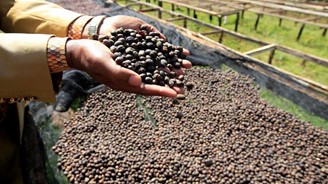
Sources:
- Odisha CM Naveen Patnaik launches e-commerce platform for Koraput Coffee
- International Coffee Day: Odisha CM inaugurates Koraput Coffee Café, dedicated e-commerce platform
- Cultivation of Coffee in India: Conditions, Production and Distribution
- Tata to market Odisha's Koraput Coffee across India, oversees
Eco- Anxiety
- Context: Due to increased impact of climate change on the planet, a sizeable population is being subject to eco-anxiety.
- Eco-Anxiety is a chronic fear of environmental doom (environmental damage/ecological disaster).
- It is common among Gen Z (generation born between 1997 and 2012) and millennial age-groups, as they are the ones who assess the damage of the world they are about to inherit.
- It manifests as trauma and shock, depression, aggression, reduced feelings of autonomy and control, feelings of helplessness, fatalism, and fear.
- Channeling this anxiety into action such as volunteering and community action, along with supportive therapy, will help countering eco-anxiety.

Source:
- Climate emergency has given rise to eco-anxiety, and it’s here to stay
- What to know about eco-anxiety
Image Source:
In the Lok Sabha, the case of the missing deputy speaker-HT
Essence: The article expresses views around the non-election of the current Lok Sabha. The office of the Deputy Speaker has been lying vacant since the constitution of the present Lok Sabha in 2019 and a petition was filed recently in the Delhi High Court seeking its intervention in the matter of the election. The Constitution (Article 93) recognizes the importance of the office of the Deputy Speaker as he/ she performs the duties of the Speaker when the office of the Speaker is vacant.
The Article has also expressed about the powers of the Speaker w.r.t. the appointment of the deputy-Speaker. As Judicial Review of non-election of the deputy speaker is a debatable point, the Speaker can put an end to this controversy by fixing the date of election on his own.
Why you should read this article?
- To understand the Constitutional importance of Deputy Speaker.
- To understand the Constitutional provisions related to appointment of Speaker and Deputy-Speaker.
Source:
Taproots to help restore India’s fading green cover
Essence: The article discusses the various issues concerning forest cover on global and Indian level. Despite various international conventions and national policies, decline in global forest cover through deforestation, conversion and land degradation has been reported. Several issues like increasing dependence on forest cover, planting without considering the local ecology, poverty are the various reasons behind the decline. The article stresses the need for additional efforts, apart from the current ones like increasing local community participation, adequate financing, active engagement, awareness, and capacity building of stakeholders with enabling policy interventions to achieve remaining 16 MHA restoration objectives for India.
Why should you read this article?
- To get an overview of state of worlds and India’s forest status.
- To understand reasons associated with declining forest cover in India and at global level.
- To know the possible steps should be taken to tackle the same.
Source:
An alphabet soup New Delhi needs to sift through: TH
Essence: The article primarily talks about India’s stand in the era of multilateral groupings across the globe like EU, ASEAN, NATO, etc. The article talks about the dynamic and agenda of various groupings. Also, there is mention of changing priorities in changing times. The article also mentions of the upcoming groupings like BRICS, SAARC, etc., and raised questions for India’s agenda and contribution to these groupings. There are groups lie Asia-Pacific Economic Cooperation (APEC) and Nuclear Suppliers Group (NSG) which have eluded India even though it has major stakes in them. USA’s formation of Quad 2.0 and then AUKUS have made India critically think about the proliferation of alliances and groups by other countries, and question its stand in terms of agenda within the member groups.
Why you should read this article?
- To understand various diplomatic, regional, and strategic groupings across the globe.
- To understand India’s, stand and concerns posed by recently formed Quad and AUKUS alliances.
Source:
Kamla Bhasin: A women of substance
Background
- Eminent feminist, women's rights activist, poet, author and social scientist Kamla Bhasin breathed her last, on 25 September, 2021.
- She was a vivid activist with a feminist in approach, a leader, author Kamala Bhasin a women of substance.
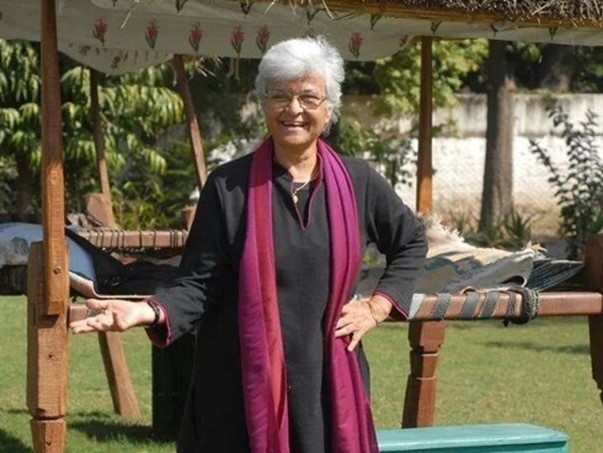
About Kamala Bhasin
- She was born in Shahidanwaali village in the Gujrat district of Punjab – now in Pakistan – in 1946 and acquired her education from Rajasthan and University of Münster in West Germany.
- As her father was a doctor residing in a village of Rajasthan, it helped her understand about the women issues in villages.
- Kamla, an outspoken champion of women's rights in India and South Asia since the 1970s, was best known for her work with Sangat: A Feminist Network and her poem Kyunki main ladki hoon, mujhe padhna hai.
- She worked with United Nations till 2002 especially with the FAO.
- She played an important role in the women's movement that arose after the horrific Mathura rape case. The movement led to significant changes in the law on rape in India.
- Bhasin long spoke about the need to ensure the feminist movement in India included Dalit voices.
- Bhasin brought the 'Azaadi' chant to India, which Pakistani feminists first used to protest against the Zia-ul-Haq regime.
Lesson to learn:
Leadership, Gender equality, Empathy, Compassion, Goal oriented.
Quote:
“Feminism was not a war between men and women but a war against the ideology of patriarchy, ie a clash of two ideologies.”- Kamla Bhasin
Source:
Share the article
Get Latest Updates on Offers, Event dates, and free Mentorship sessions.

Get in touch with our Expert Academic Counsellors 👋
FAQs
UPSC Daily Current Affairs focuses on learning current events on a daily basis. An aspirant needs to study regular and updated information about current events, news, and relevant topics that are important for UPSC aspirants. It covers national and international affairs, government policies, socio-economic issues, science and technology advancements, and more.
UPSC Daily Current Affairs provides aspirants with a concise and comprehensive overview of the latest happenings and developments across various fields. It helps aspirants stay updated with current affairs and provides them with valuable insights and analysis, which are essential for answering questions in the UPSC examinations. It enhances their knowledge, analytical skills, and ability to connect current affairs with the UPSC syllabus.
UPSC Daily Current Affairs covers a wide range of topics, including politics, economics, science and technology, environment, social issues, governance, international relations, and more. It offers news summaries, in-depth analyses, editorials, opinion pieces, and relevant study materials. It also provides practice questions and quizzes to help aspirants test their understanding of current affairs.
Edukemy's UPSC Daily Current Affairs can be accessed through:
- UPSC Daily Current Affairs can be accessed through Current Affairs tab at the top of the Main Page of Edukemy.
- Edukemy Mobile app: The Daily Current Affairs can also be access through Edukemy Mobile App.
- Social media: Follow Edukemy’s official social media accounts or pages that provide UPSC Daily Current Affairs updates, including Facebook, Twitter, or Telegram channels.



